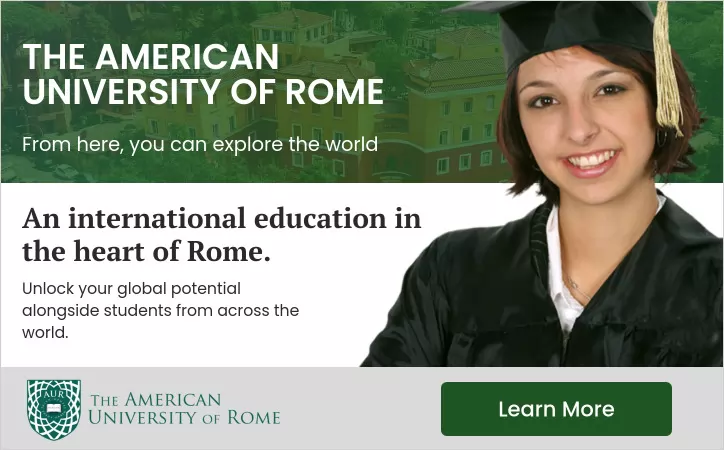Herculaneum is less well-known than Pompeii but in many ways it offers a more complete visitor experience.
One hot summer day in 79 AD, 300 terrified citizens of the seaside town of Herculaneum fled to the harbour in a desperate attempt to escape from the advancing cloud of deadly pyroclastic dust erupting from the nearby volcano, Vesuvius. Families huddled together inside the row of cave-like warehouses carved out of the seafront wall, clutching their children and their valuables, waiting for the imperial Roman fleet to come and rescue them. Unfortunately, they waited in vain.
Copies of the scattered bones of these unfortunate people fill the shallow grottoes at the foot of the excavated city, and they make grim viewing. Laid out in the exact position of the originals ("we were very conscious of the fact that these were the remains of actual people and so they were removed out of respect for the dead," explains one of the site custodians), the writhing and contorted skeletons testify to the suffering of these long-ago victims, who shared the fate of their neighbours at Pompeii.
Doomed townspeople
From the archaeological point of view, however, the mass congregation of the doomed townspeople was a bonanza. Many of the dead had grabbed their most precious possessions, like jewellery, hoards of coins and objects in gold and silver, and examples of these are now on show in the recently opened Antiquarium inside the site. The exhibition "SplendOri il lusso negli ornamenti a Ercolano" (Splendid Valuables, the luxury of the ornaments at Herculaneum"), running until the end of September, gives a fascinating glimpse of the refinements to which the wealthy classes were accustomed, as well as the skills of the craftsmen who made them.
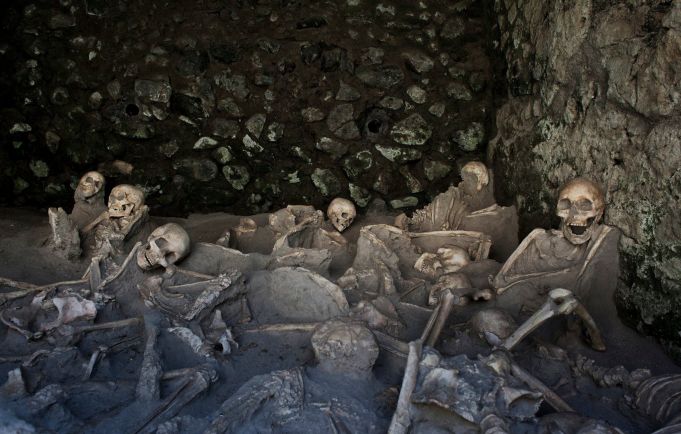
Prior to the eruption, Herculaneum was a tranquil provincial city, a popular holiday retreat for wealthy Roman citizens, with a prosperous artisan class and a booming business in wine production, as proven by the discovery of amphorae stamped with a "Herculaneum Wine" logo. It was smaller, but more fashionable and better organised than Pompeii, with underground sewage pipes instead of open drains (like in Pompeii) and public baths equipped with revolutionary and more efficient heating systems.
Emeralds and pearls
The exhibition displays a selection of some of the rarest and most precious finds. In their respective display cases we can admire perfectly preserved pieces of jewellery like golden bracelets, a necklace of rock crystal, a pair of gold earrings set with emeralds and pearls, intact but fused by the heat of the holocaust to a handful of bronze coins, and a finely wrought belt of spun gold. Many of these had been worn by the fugitives at the moment of their death.
"A Roman matron," explained Herculaneum curator Francesco Sironi, "would never have dreamt of leaving the house without her jewellery."
Roman society
Status in provincial ancient Rome was everything. Roman society was stratified within a distinct class system that was, however, flexible enough to allow an enfranchised slave to make a personal fortune and climb up the social ladder, and a display of luxury was essential for the upwardly mobile. An ancient Roman was able, at first glance, to gauge the social status of any person he met. Lifestyle was defined by adornments like gold and jewels, clothes, hairstyles, the use of rare and exotic perfumes, the number of slaves kept in the household. The rich entertained lavishly, competing with each other to impress their guests with rare dishes and refined tableware of such exquisite craftsmanship that they were often put on display when they were not in use. Despite the open disapproval expressed by the moralists nostalgic for an earlier age of frugality and measure, the desire for beautiful and precious objects pervaded the entire Herculaneum community, with the less wealthy making do with gold and silver placated imitations.
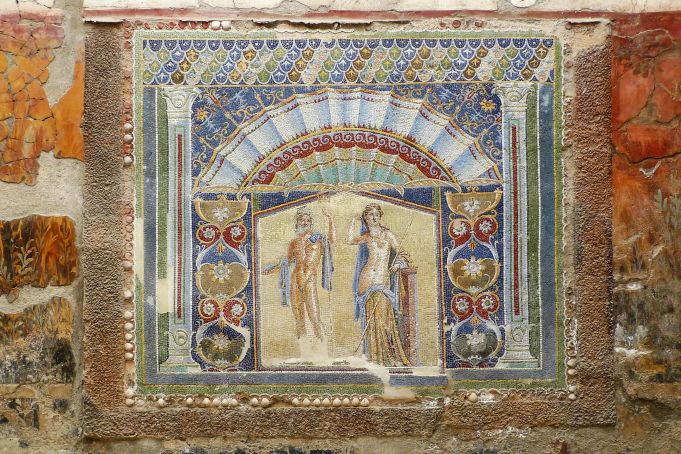
The exhibition shows a sample collection of Herculaneum treasures – many on public show for the first time – which give a fascinating glimpse into daily life in the doomed city. Some of the most striking exhibits include decorative parts of pieces of furniture, such as a horse's head with silver and copper embellishments that was once part of a bed-head, wall sconces, a two metre-high inlaid candleholder and an elegant jug with a winged lion on the handle. Among the kitchen ware there are delicate bronze sieves peppered with tiny holes, a decorated silver ladle and a bronze salver with detachable handles.
There are other, more poignant, objects: sets of house keys, baskets and cords, a box of surgical instruments that a doctor had taken with him on his flight, a pile of gemstones from a jeweller's workshop, collections of stylish glass cosmetic ampoules that once graced the Roman lady's dressing room.
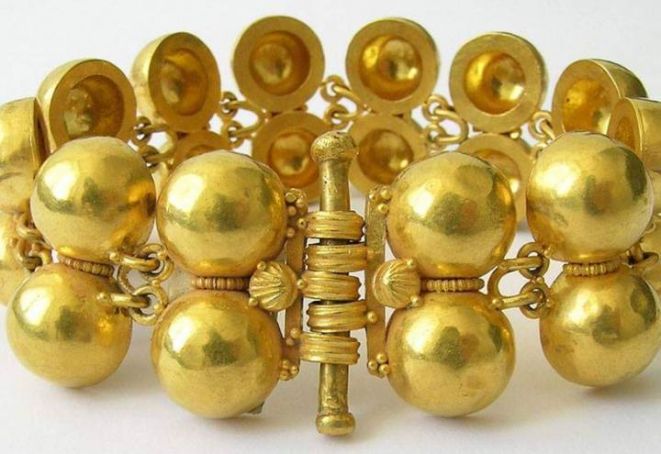
Francesco Sirano is celebrating his second year as Herculaneum curator and regards the Antiquarium conversion from former offices to an exhibition centre as a first step towards boosting a wider awareness of the site. Last year's visitor figures were just under 550,000 - a fraction of the number of visitors that go to Pompeii.
"I was really keen to open the Antiquarium to the public because the park of Herculaneum deserves to have a prestigious exhibition space. Herculaneum has been a designated UNESCO World Heritage Site along with Pompeii ever since 1997 but we have hundreds of archaeological treasures in storage that people can't see. I'm planning to create a permanent museum space here to remedy this situation."
The Herculaneum treasure survived because the city was affected by the consequences of the eruption in a different way from Pompeii and this has also contributed to the site's unique fascination. The houses are better preserved than in Pompeii and many of the wooden fixtures like doors, balconies and pieces of furniture have survived, charred but recognisable.
Eruption
Due to the direction of the winds on the first day of the eruption, Pompeii was more severely affected. Many of the roofs collapsed under the weight of the falling ash and pumice stone, crushing all those who had tried to take refuge indoors and destroying most of the contents of the homes. In the case of Herculaneum, the incandescent gas that killed the inhabitants evaporated rapidly and the heavy blanket of semi-liquid lava that covered the city carbonised, preserving many items of organic matter.
A particularly precious find was the collection of 1,800 scrolls found in the library of the palatial residence known as the Villa of the Papyri, which belonged to Julius Caesar's father-in-law, Lucius Calpurnius Pisone. The scrolls were preserved because they had been sealed off in a totally dry environment under 30 metres of solidified volcanic mud. Unfortunately, our guide told us, many of the manuscripts were so fragile that they crumbled into dust when they were touched. Those that have survived are in the highly specialised restoration laboratory in the Archeological Museum of Naples. For security reasons, the Villa dei Papiri is not open to the public.
Excavations
In compensation, Sirano is going ahead with plans to open additional places of interest to visitors. He explains that only about a quarter of the city area has been excavated. Unfortunately, the rest is buried underneath the modern town and is therefore inaccessible. However, by following the tunnels dug out during the earliest archaeological explorations in the 18th century it is possible to reach the Roman amphitheatre which lies 25m under the bustling Via Resina outside the archaeological area.
Equipped with miners' helmets and torches we make our way down an uneven flight of steep stone steps and along a sequence of dark passages to the former stage facing the remains of the cavea, passing fragments of marble columns, traces of the original frescoes overwritten with the signatures of 19th century tourists on the Grand Tour and an inscription dedicated to Herculaneum proconsul Marcus Nonius Balbus, a leading light and a benefactor of the city, who restored the basilica, the town walls and the port.
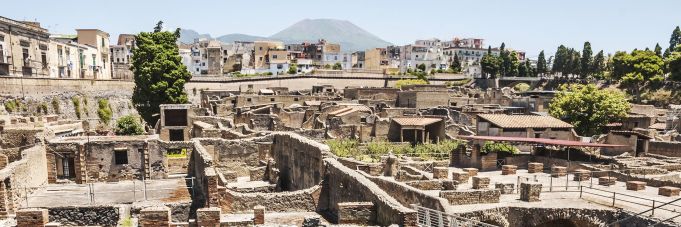
This particular ship may have tried to dock at all costs and was overturned by the fury of the waves. The skeleton of a Roman officer, identified by his sword engraved with the symbols of command, his dagger and a pouch of gold coins all attached to his belt, was found nearby.
"We don't know for sure, of course, but we believe he was probably the vessel's commander."
The vessel is kept inside the boat pavilion along with other finds related to the sea and navigation. Entry is included in the Herculaneum entrance ticket.
By Margaret Stenhouse
For details tel. 0817324315 or see website.
Herculaneum Conservation Project (HCP)
From 2004-2014 the British School at Rome was a partner in the Herculaneum Conservation Project (HCP), a pioneering public-private initiative begun in 2001 to protect, enhance and manage the archaeological site and its relationship to the surrounding area. For details of the project see website.
This article was published in the April 2019 edition of Wanted in Rome magazine.
Cover image Arte Magazine
General Info
View on Map
The unique heritage of Herculaneum
Parco Archeologico di Ercolano, Corso Resina, 80056 Ercolano NA, Italia



